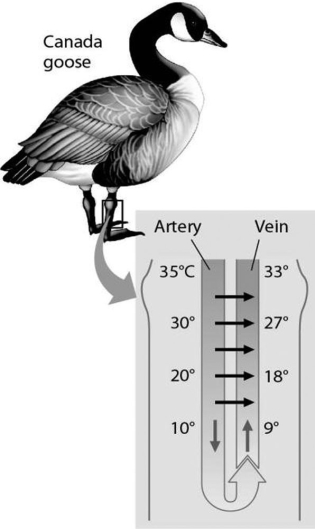Multiple Choice
 Figure 32.1
Figure 32.1
-The thin horizontal arrows in Figure 32.1 show that
A) the warmer arterial blood can bypass the legs as needed when the legs are too cold to function well.
B) the warmer venous blood transfers heat to the cooler arterial blood.
C) the warmer arterial blood transfers heat to the cooler venous blood.
D) the arterial blood is always cooler in the abdomen, compared to the temperature of the venous blood in the feet of the goose.
E) the goose's legs get progressively warmer as the blood moves away from the abdomen to the feet.
Correct Answer:

Verified
Correct Answer:
Verified
Q4: The increased contraction of the human uterus
Q15: Materials are returned to the blood from
Q39: An inoperable tumor has been discovered in
Q47: Which nitrogenous waste has the greatest number
Q69: When stimulated by antidiuretic hormone (ADH),the reabsorption
Q77: In a cold environment that supports life,
Q78: A primary reason that the kidneys have
Q80: The fluid with the highest osmolarity is<br>A)
Q83: An example of a homeostatic response is<br>A)
Q87: Iodine is added to table salt to